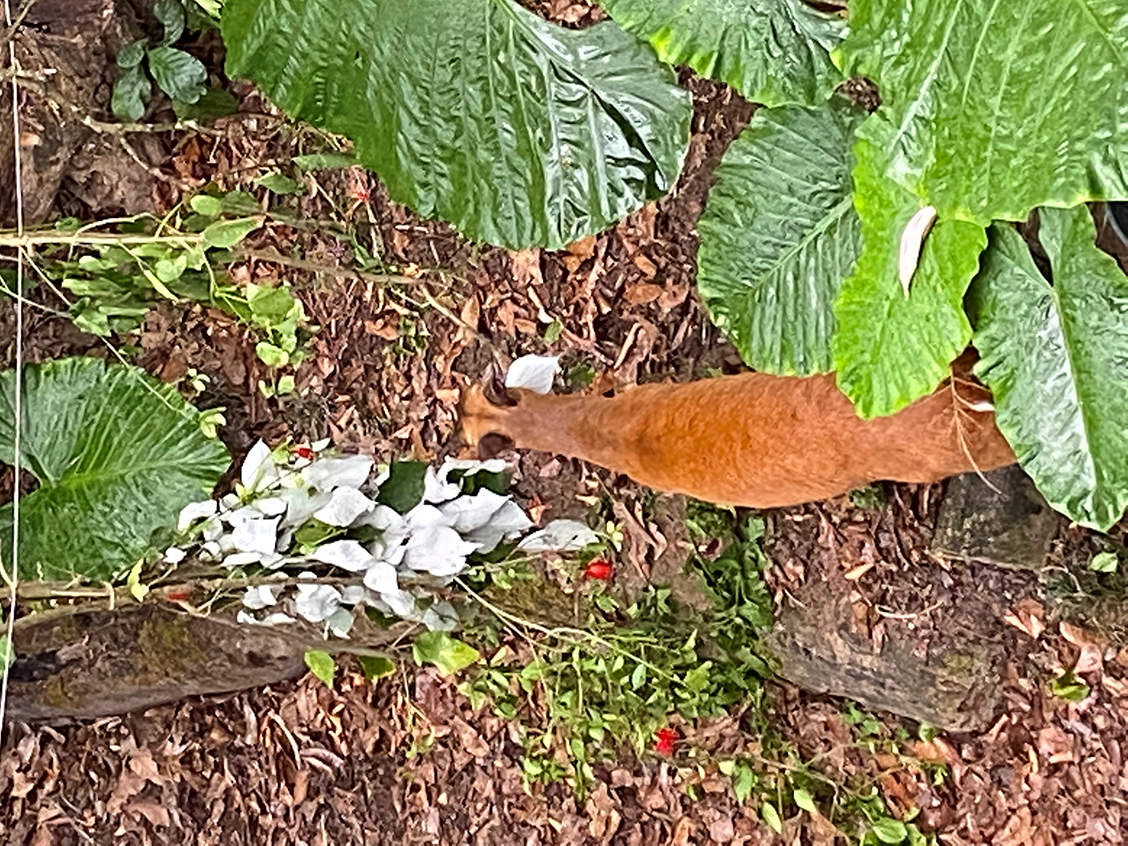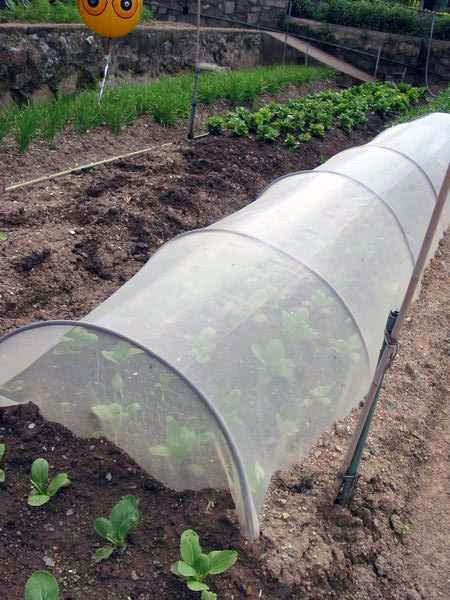

Careful placement of food items in the animal enclosure to minimise attracting rats.
What is a PEST?
A pest is a living organism (animal, plant, fungus, bacteria or virus) that as a result of its presence or activity is in some way in competition with/detrimental to other living organisms (including humans) or of human concerns (such as pests of agriculture production). In its broadest sense, a pest competes in a significant way with human society and/or negatively influences harmony in nature by disturbing the natural balance (e.g. ecological integrity).
‘Pests’ at KFBG
KFBG’s hillside is home to many wild animals. Most of our wild inhabitants thrive on natural food sources found in the nature reserve and form an important part of our ecosystem. From time to time wild animals can be attracted by the concentrated food sources at our organic agriculture areas and animal feed in the live educational displays and we need to develop ways to protect the fruit, vegetables and captive animal feed. Wild animals can be resourceful and clever at getting what they want so the staff must continually develop ways to protect these resources, while at the same time not harming the wildlife.

Use of physical barriers, e.g. bird protection net to prevent wild birds accessing crops.
At KFBG our Pest Management Team is responsible for responding to Pest Reports raised by staff. These can range from reports of ants spotted in an office area, rats entering storage areas, to cattle grazing on the tree planting areas on the upper hillside. In all our pest management operations we are always mindful of our Mission: To harmonise our relationship with the environment. We do not use inhumane trapping methods or invasive eradication programmes, nor do we advocate the use of pesticides, which can be toxic to a host of non-target organisms. At KFBG we have adopted a number of wildlife-friendly ‘pest management’ measures to meet the challenge of pest management.
One of the first steps is raising awareness – often the problem can easily be solved by removing access to the food source, such as keeping a clean and tidy working environment to prevent ants or rats in offices; careful placement and containment of food items in the animal enclosures to minimise rats, or the use of physical barriers, e.g. wooden gates to prevent mammals such as wild boar accessing crops. For more details about the challenges faced in carrying out organic agriculture adjacent to a private nature reserve and the steps we take to protect our crops in a wildlife-friendly way please see:
Caught on camera: wild animals enjoying our crops and mitigation measures to limit damage
